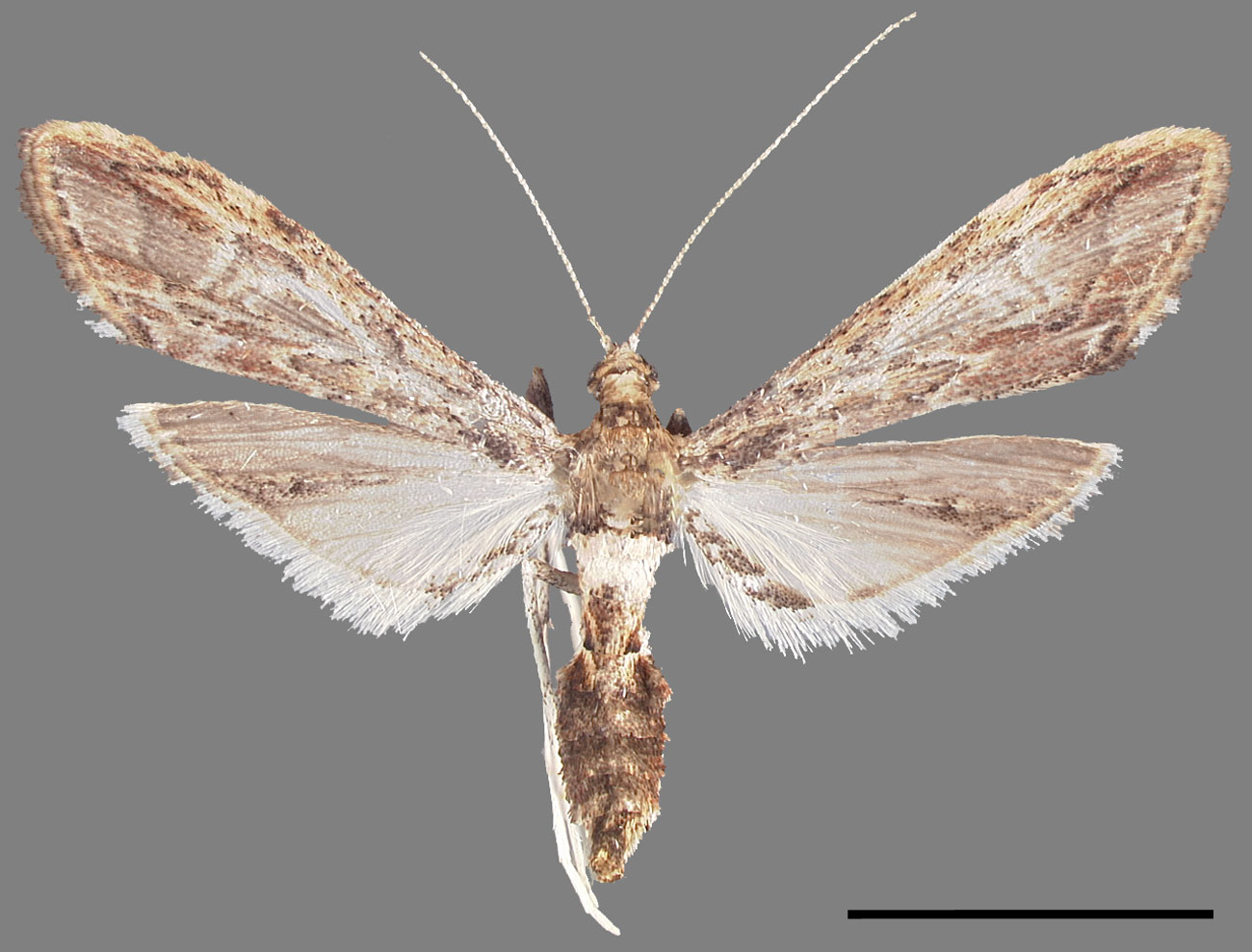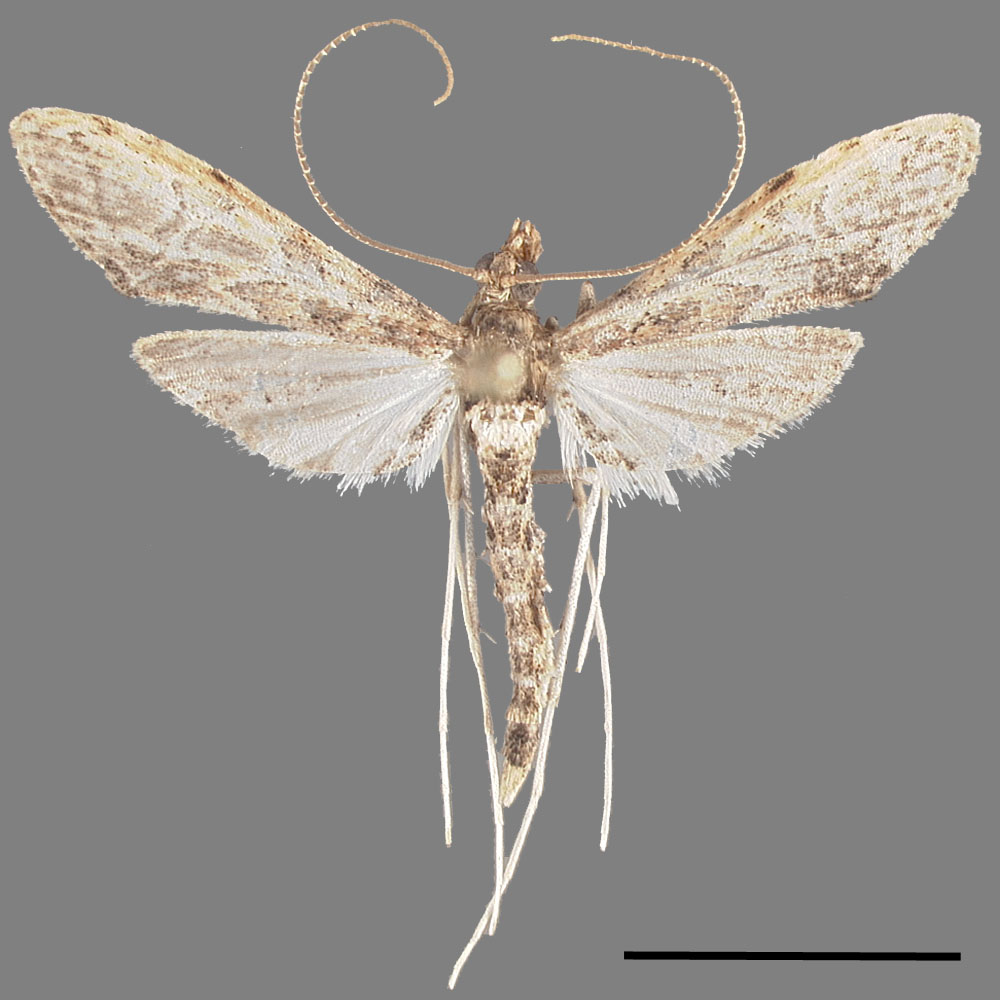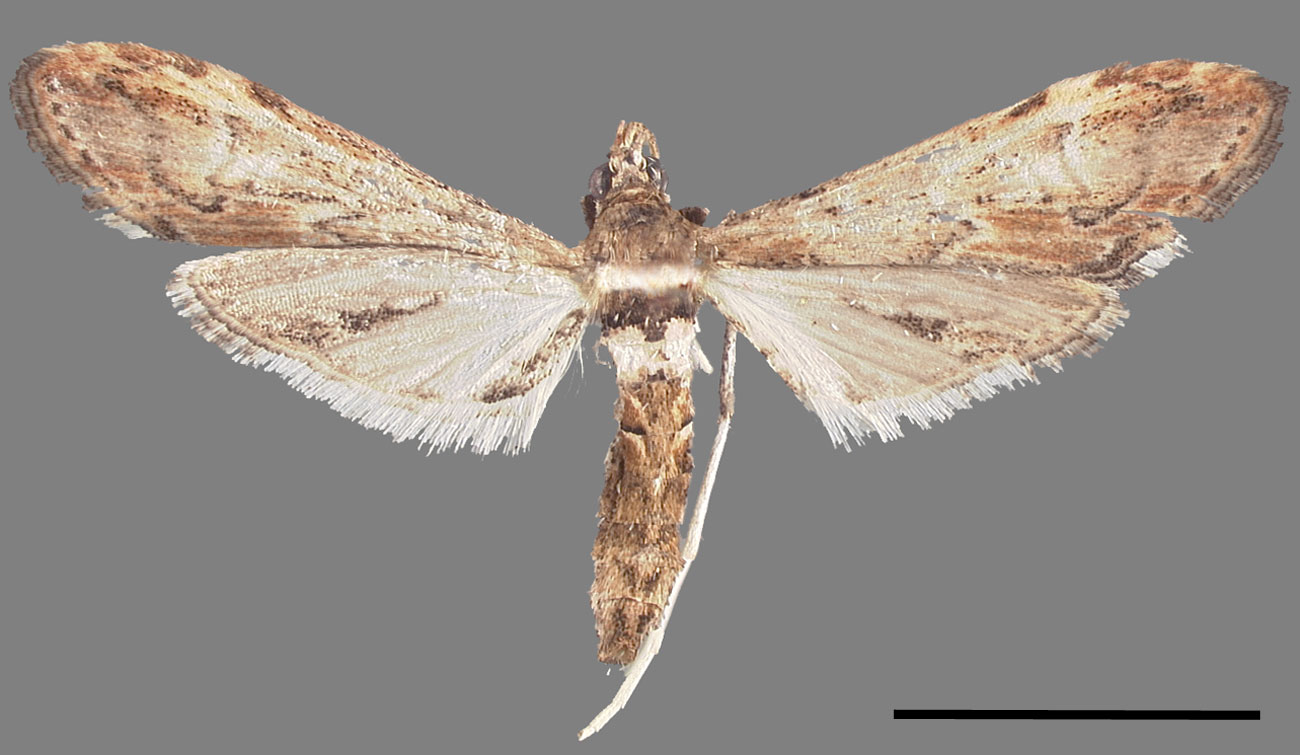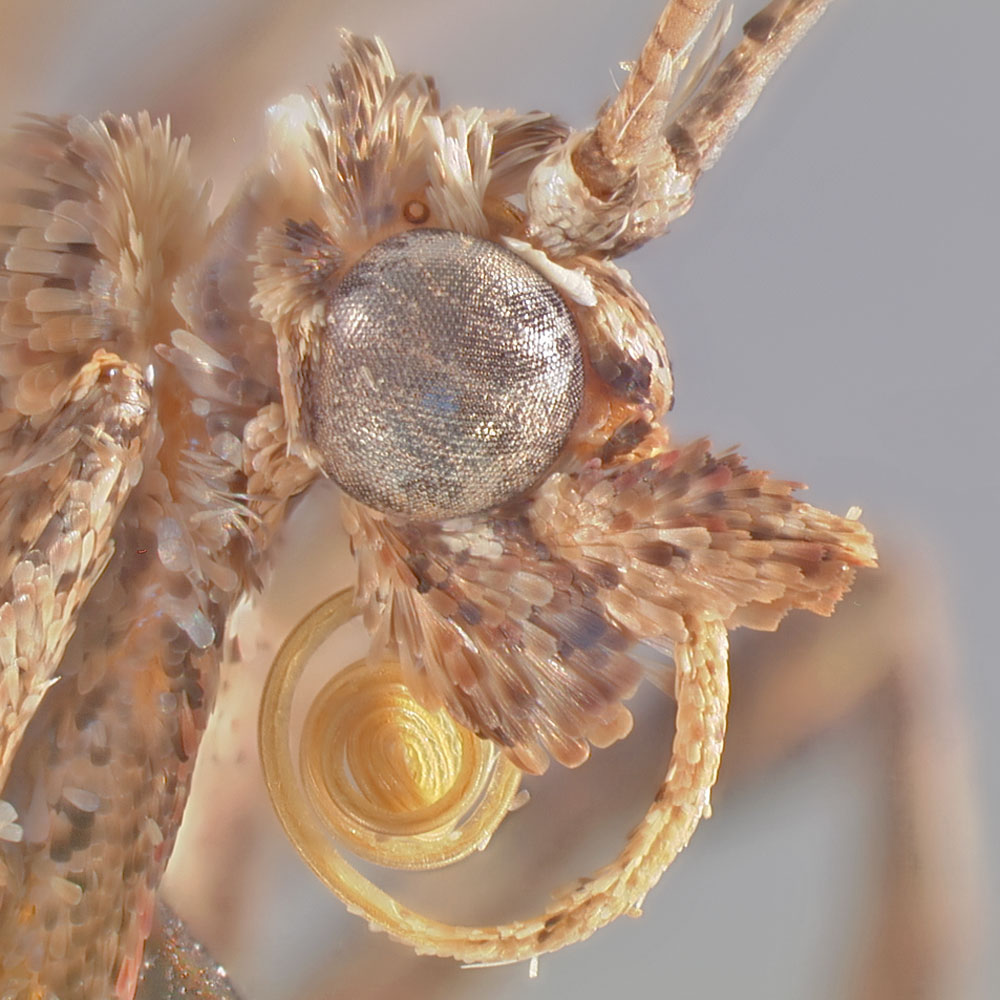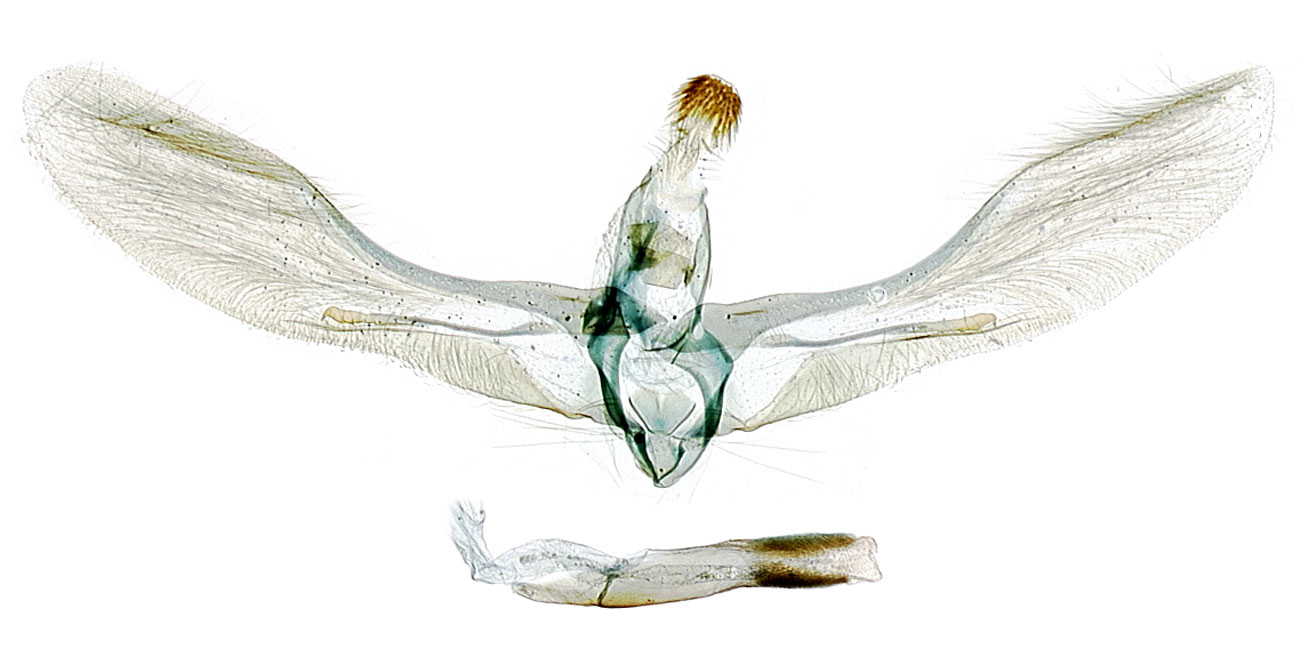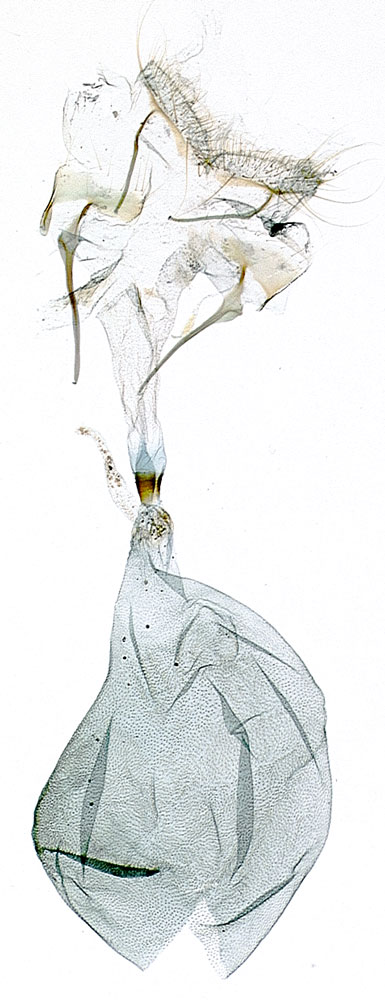Atomopteryx solanalis
|
Atomopteryx solanalis female habitus. Scale = 5 mm. |
|
Atomopteryx solanalis male habitus, Florida. Scale = 5 mm. |
|
Atomopteryx solanalis female habitus. Scale = 5 mm. |
|
Atomopteryx solanalis head. |
|
Atomopteryx solanalis male genitalia. |
|
Atomopteryx solanalis female genitalia. |
Name
Atomopteryx solanalis (Barnes & McDunnough, 1913)
Common name: none
Original combination: Stenoptycha solanalis Barnes & McDunnough, 1913
Synonyms: none
Alternative combinations: none
Classification: Pyraloidea: Crambidae: Spilomelinae, Leucinodes group
Adult recognition
Forewing length: 7.5–9.0 mm, narrow. The wing pattern is solidly pale brown, without contrasting areas of white or dark brown. The faint, blackish PM line undulates across the wing with a shallow concavity on the medial veins. In the hind wing venationVenation:
The pattern of wing veins.
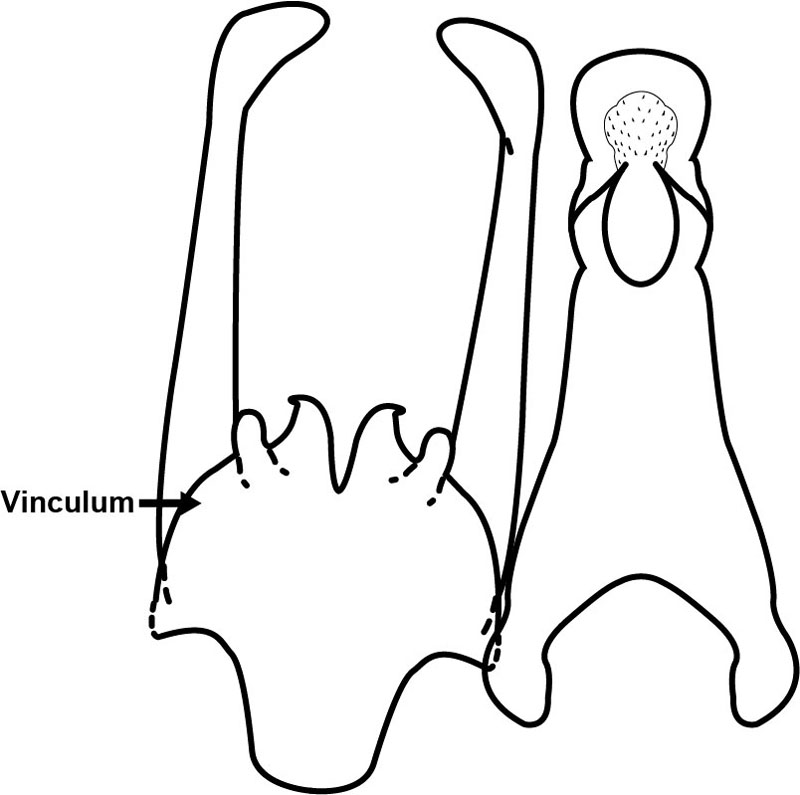 , one of the medial veins is lost. In the male genitalia, the valvaValva:
, one of the medial veins is lost. In the male genitalia, the valvaValva:
One of the pair of large lateral appendages of the male genitalia (pl. valvae).
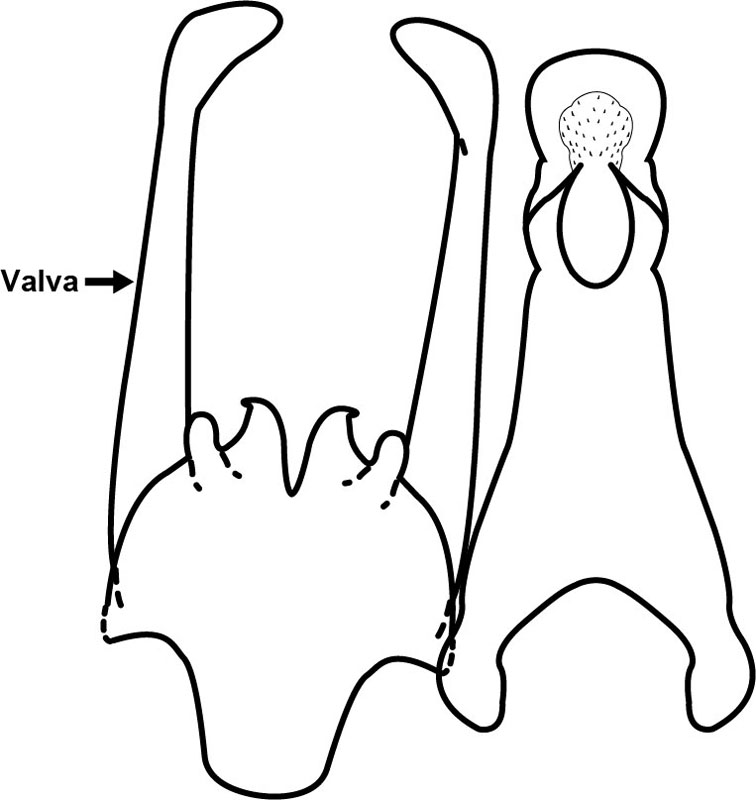 has a short fibulaFibula:
has a short fibulaFibula:
Any projection on the face of the valva (not including the saccular process, if any).
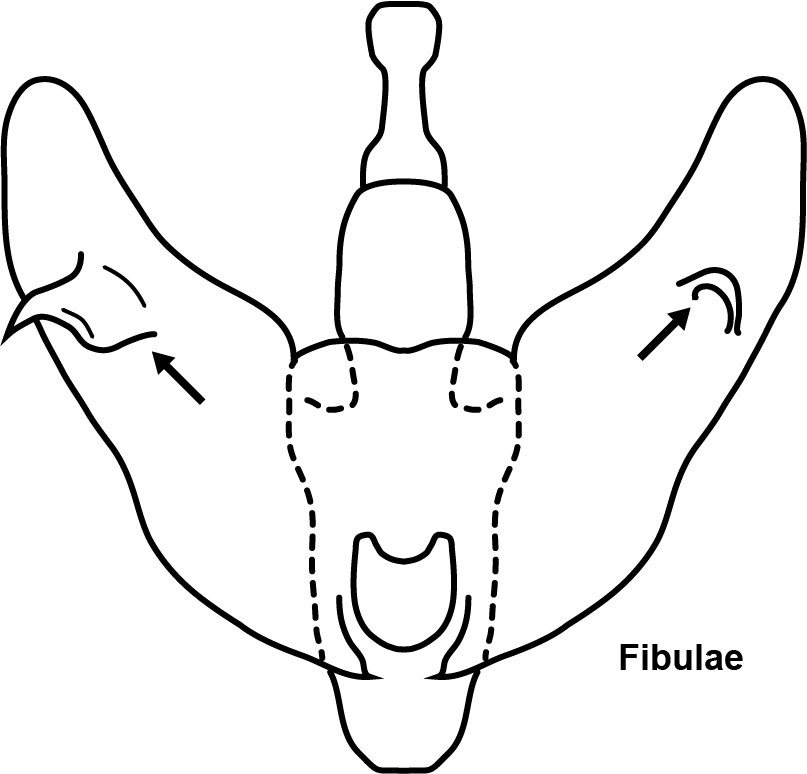 that is apically swollen with a small, down-curved tooth, and the sacculusSacculus:
that is apically swollen with a small, down-curved tooth, and the sacculusSacculus:
The ventro-basal area of the valva.
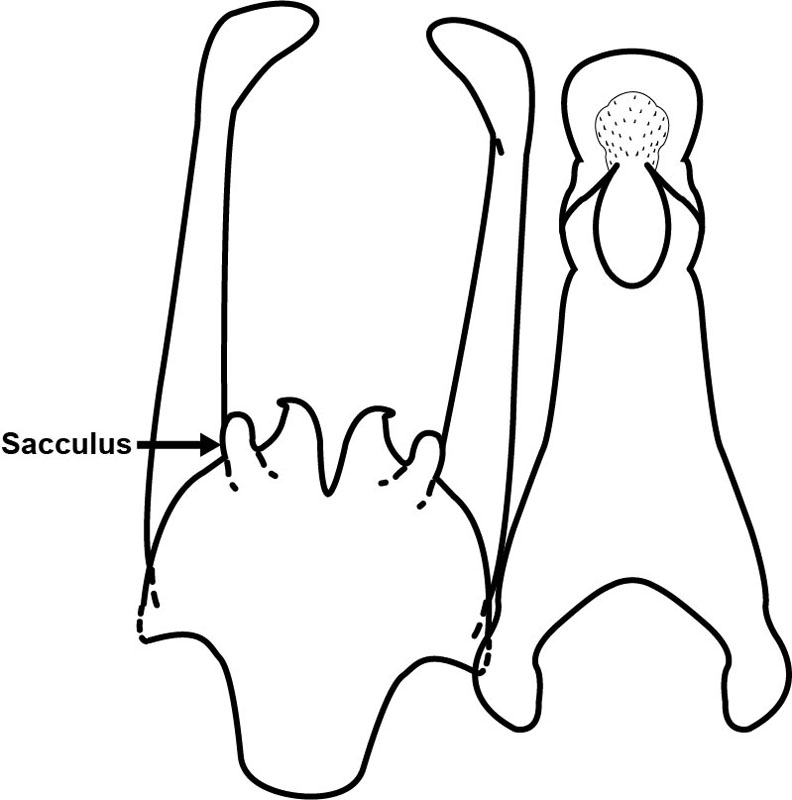 has a triangular window. In the female genitalia, the colliculumColliculum:
has a triangular window. In the female genitalia, the colliculumColliculum:
The collar-like sclerite around the posterior end of the ductus bursae.
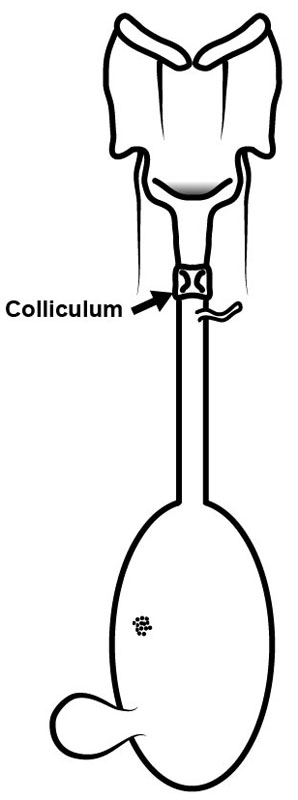 is close to the corpus bursaeCorpus bursae:
is close to the corpus bursaeCorpus bursae:
The enlarged, bulbous anterior end of the female genitalia.
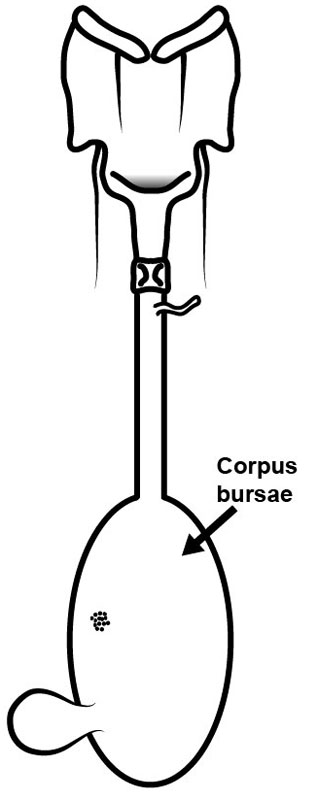 (that is, the antrumAntrum:
(that is, the antrumAntrum:
Posterior section of the ductus bursae, posterior of the colliculum.
 is elongate and the ductus bursaeDuctus bursae:
is elongate and the ductus bursaeDuctus bursae:
The usually narrow duct between the ostium and antrum and the corpus bursae.
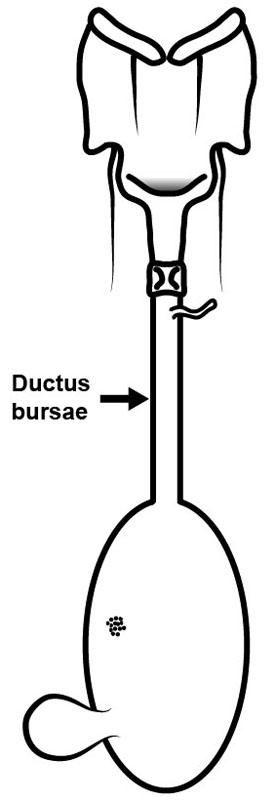 is short).
is short).
Immature stages
Not described.
Similar species
Atomopteryx pterophoralis is widely distributed in the Caribbean, Central and South America. The plain brown wing pattern is similar to A. solanalis, but male A. pterophoralis lack a fibulum. In Puerto Rico, it has been reared from Solanum torvum leaves (Medina Gaud and Martorell 1970Medina Gaud and Martorell 1970:
Medina Gaud S and Martorell LF. 1970. New insect records for Puerto Rico. Journal of Agriculture of the University of Puerto Rico 57: 247-254.).
Behavior
A leaf-tier. Collected together with Lineodes integra.
Distribution
USA: Florida. Rare; most common in the Florida Keys. Also in the Bahamas and Cuba.
Hosts
“Solanum verbascifolium” (USNM)
Solanum sp. (original description)
Comments
This species was described from southern Florida. It was synonymized by Dyar (1913) with A. pterophoralis but considered to be a good species by Munroe (Kimball 1965Kimball 1965:
Kimball CP. 1965. The Lepidoptera of Florida: an annotated checklist. Arthropods of Florida and Neighboring Land Areas, Vol. 1. Division of Plant Industry, State of Florida Department of Agriculture, Gainesville, Florida. V+363 pp., 26 plates.). Specimens identical to A. solanalis also have been collected in Cuba, along with other species that differ as indicated under Similar Species.
Literature
Barnes and McDunnough 1913Barnes and McDunnough 1913:
Barnes W and McDunnough JH. 1913. Some apparently new Lepidoptera from southern Florida. Contributions to the Natural History of the Lepidoptera of North America 2: 166-195, pl. 1-4.
Barnes and McDunnough 1914Barnes and McDunnough 1914:
Barnes W and McDunnough J[H]. 1914. On the synonomy of certain Florida Lepidoptera. Canadian Entomologist 46: 27-31.
Dyar 1913Dyar 1913:
Dyar HG. 1913. The separation of some species of Lineodes (Lepidoptera, Pyralidae). Insecutor Inscitiae Menstruus 1: 94-96.
Medina Gaud and Martorell 1970Medina Gaud and Martorell 1970:
Medina Gaud S and Martorell LF. 1970. New insect records for Puerto Rico. Journal of Agriculture of the University of Puerto Rico 57: 247-254.

